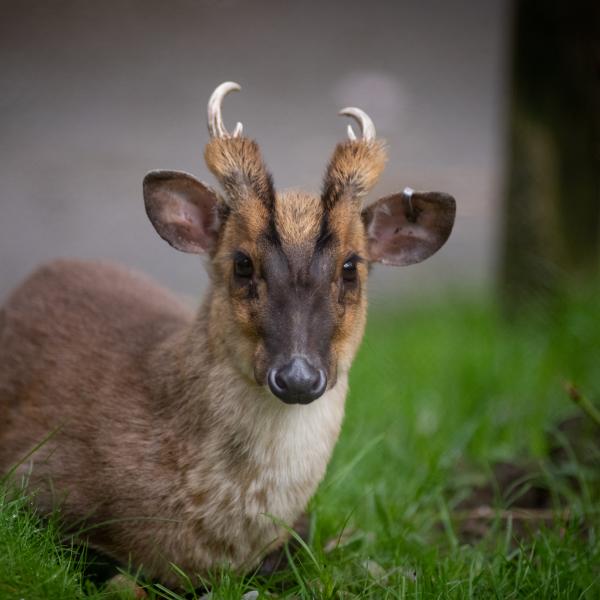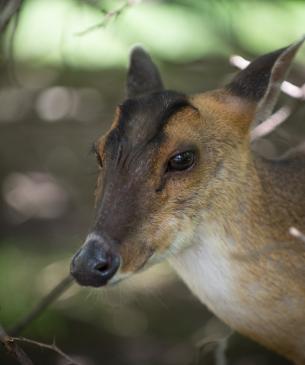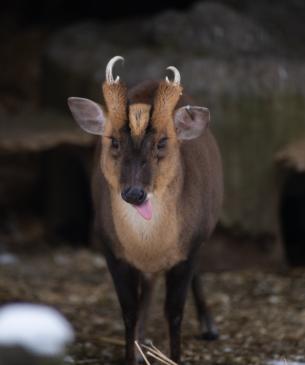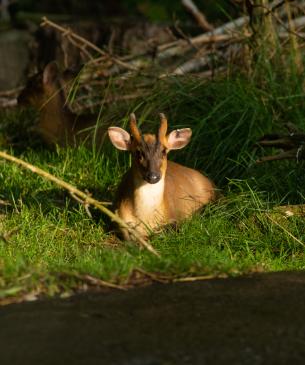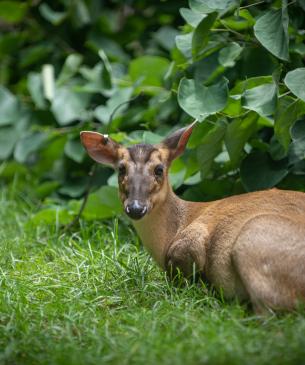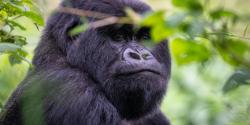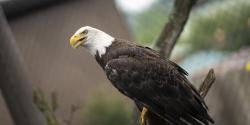Muntjac species are the oldest known deer – believed to have appeared 15 to 35 million years ago.
Reeves muntjac are one of the smallest deer species, but there are others that are smaller. Individuals can weigh up to 25 pounds.
Scientific Name: Muntiacus reevesi
Conservation Status: Least Concern
Size: Average about 16 inches in height and range from 25 to 52 inches in length
Weight: Ranges from 22 to 40 pounds
Median Life Expectancy: 10.2 years

